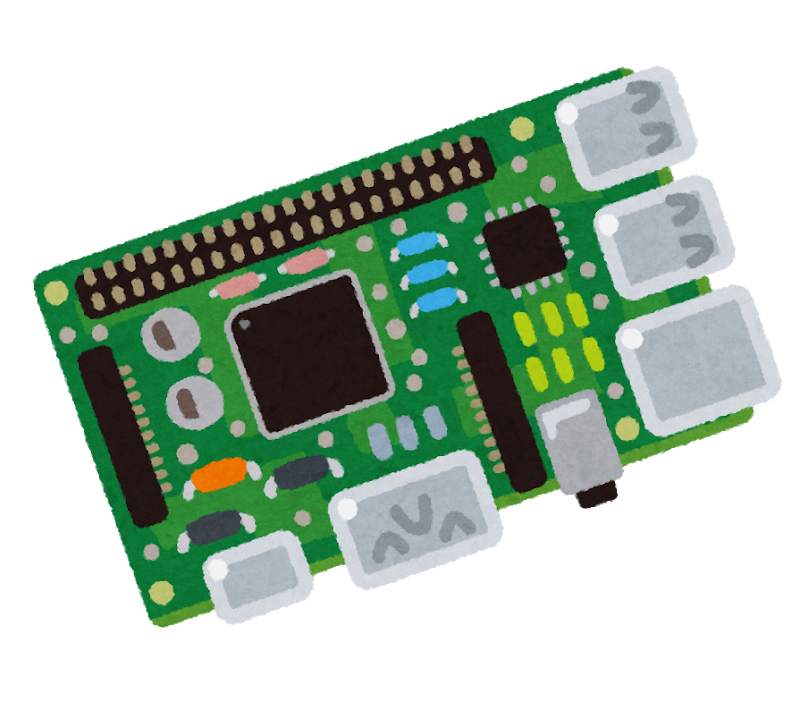Hey Everyone!
I’m new to this whole Lemmy/SLRPNK.net world. However I am a seasoned old-timer when it comes to having a computer constantly on in the corner of my house doing things. I came to visit this community and thought I’d throw my 2c out here for any potential new people who come snooping around.
In the world of self-hosting, there are like 100 things you can do, everything from a smart home, to a multiple rack mount server setup. I am here to introduce any new people to a concept that I think should be getting more attention. After I heard about the spike in new sign up’s after Netflix pulled their no-password sharing shenanigans, I thought hey, people must not know that this is an option. Self-hosting a media server might be the most simple, yet biggest rebellion against this culture of constant targeted consumption.
Yes yes, I know that most of you long time nerds have had home servers for years, but what about the people who don’t?
So… What is it?
Think of Netflix, except you get to decide what is on it. No fees, no rules, no taking things off. You can watch stuff from your phone on the train, or even get your mother-in-law that show she’s been struggling to find.
How can I have all these cool things at my fingertips? Well, you’ll need two things.
1. A home server of some kind. If you already have one, excellent! If not, this is unfortunately not a guide on how to get started with self hosting, but a raspberry pie (or one of the alternatives, rockpie, pine64,orangepi) or any old computer, yes even a laptop, is a fine place to start. Give it the OS the manufacturer recommends. If you want more than that,I am sure the many lovely members of this community would love to help you out.
2. A media server software.PLEX, Emby, or Jellyfin are your “real” options. Plex is robust, mostly free, and constantly gets updates. Emby is a fork of plex that happened before the devs started to get greedy and make a premium tier. Jellyfin is the fully free open-source alternative. All three will have apps for your smart TV, or phone. (although plex supports the most, eg xbox, playstaion, Samsung tv, lg tv’s, android and ios)
Now that you have your server, follow the setup guide given by your app of choice, and put some media on your server. You can use a USB, or some kind of remote connection to do this.
Where do you get your media?
Most Blueray or DVD purchases will give you a code inside to get a digital download. Personally, I have no issues with encouraging you to sail the high seas. However for those wanting to walk the straight and narrow, many libraries offer the ability to rip VHS content to digital… and well, CD/DVD drives aren’t hard to find.
Now run yourself a bath, grab some wine, and watch that obscure 1990’s anime in peace, knowing that no woke or conservative mob will every be able to stop you from enjoying jiggle physics Dragon Ball.
Satisfied Jellyfin user here. I had a Plex server for years but they kept pushing all kinds of new features I didn’t want that just made everything feel slower.
I honestly love having all my stuff self-hosted – lemmy is one of maybe three websites that I actually visit rather than having an rss feed send me the info. If anyone is curious, I’m more than happy to go into my setup a bit further but here’s the tl;dr on it:
- I run all docker containers in Portainer so I can view all my container health in one spot. The only thing that is not containerized is a raspberry pi running PiHole to block ads across the whole network
- I have Jellyfin as my media server pointed to a shared network drive. Jellyfin gets all of its movie, tv, music, and book information from Sonarr, Radarr, Lidarr, and Readarr. They in turn are able to download things from Prowlarr which connects to usenet and ahem other sites for media
- I run backups to a backblaze bucket from Duplicati and sync all files across multiple devices to backup from Syncthing – this handles my phone, my laptop, my server
- I have an RSS aggregator with Miniflux so that all the sites that I actually care about come to me rather than me having to check their pages for an update. If I find an article that I want to read for later, I send it to Wallabag – an opensource version of pocket
- I also host multiple databases on the server and connect them all, as well as remote databases with Trino for running sql queries on projects I’m working on
- My latest project I’m working on is feeding articles from Wallabag to a TTS engine and creating a selfhosted podcast just for me
All of this runs on an Intel NUC that isn’t anything super heavy and you don’t really have to do anything big or complicated like this either – just find a thread that looks interesting and pull on it, rinse, and repeat!
Not the point of your post, but any chance you could point me in the right direction for RSS feeds? What RSS feeds do you use and how do you get that data served to you? I get the general idea of RSS, but I’m not really sure how to incorporate it in my world now that I’m trying to move away from reddit.
No worries at all! So I use Miniflux as my RSS reader but there TONS of different ones – some open source, some freemium, some premium and closed source. Even VLC and Thunderbird can be used for keeping track of RSS feeds! For that front, I’d just search and give a couple a try – find which one suits your needs best. I used FreshRSS before making the switch to Miniflux but there are hosted options like Feedly.
In terms of finding things to read via RSS, you’ve got a ton of options there too! There’s a lot of open RSS feeds out there that just aren’t advertised. A few that I have are:
- I think all youtube channels (stackoverflow post) have the option for RSS. You can go about it the way outlined in that post but I’ve found using https://youtube[.]com/channel/CHANNEL_NAME_HERE is good enough if I want to sub to every video of a channel
- A lot of smaller blogs – most wordpress sites actually have a default rss feed that gets created unless you actively disable it
- Substack news letters/blogs for folks that I follow have this support built in
- I actually found out yesterday how to subscribe to both my Lemmy inbox and all the subscribed communities that I’m in to get those over RSS (there’s a little RSS feed icon next to the drop down filters for the latter)
- I use hnrss for hackernews since they don’t have a direct rss feed you can subscribe to. Lobste.rs at least does have the ability to subscribe to multiple “subreddits”/“communities”/what have you and be able to filter things out – otherwise it gets really noisy
- There’s a couple of folks that I follow on Twitter via Nitter that supports RSS (how to guide but since bird site is such a cess pool, might reconsider some of these.
- I live in a fire prone area so I also subscribe to some of NOAA’s RSS feeds in case my family needs to evacuate
- You can even pull various subreddits over rss if you’re still using reddit for somethings. The one thing that I loved about using these rss feeds is that you could group subreddits together into one rss feed and just have that but I imagine this will change with the API changes
- This doesn’t even include all the podcasts since the way they’re distributed is built on-top of RSS feeds!
The one big problem with RSS is that there really isn’t a good way to find other RSS feeds – or at least I haven’t found a good way, ha! Typically, I’ll get linked to a site from hackernews, lobsters, here, wherever. If I like their stuff, I’ll just paste their URL into Miniflux to see if they have an RSS feed and subscribe from there. I really wish that there was a recommendation list of good rss feeds but honestly, sometimes the best way is word of mouth? Hope this helps!
Edit: Put brackets around the youtube link so that it doesn’t turn into an actual link
This is awesome, thank you! It definitely gives me somewhere to start. I imagine I’ll struggle a bit to find feeds, but it gives me something to do other than browse reddit.
Glad it helped! Happy reading!
I have a similar setup re: Jellyfin and the *arr suite. One additional service I found useful was Unpackerr which can auto-unzip zipped downloads that the *arrs can have trouble with on occasion.
I also really like JellySeerr for letting my friends and family request shows and movies they’d like to see.
Lastly I’m also using Autoscan for faster scans of new files as they’re added. This especially helps with larger libraries, now files show up on Jellyfin within about 5 minutes of download (it’s configurable) instead of during my nightly scan and the Jellyfin server doesn’t have to be constantly scanning the remote network drive for new files, it just knows when and where they’re added.
Awesome! I really appreciate the recommendations – going to have to give these a test!
I’ve been debating moving from my Plex setup without any lidarr/etc automations to jellyfin plus all of those things, but it seems fairly intimidating. How long did it take you to set it all up?
I would recommend just starting with migrating your Plex setup to Jellyfin. You can get that done in 30 minutes to an hour.
Setting up all of the arr’s takes hours, depending on how intense you want the automations to be (hours to days). I started with Sonarr for TV/Anime direct installed on Windows. Once I knew I liked it and wanted to keep using it, I bought a small form factor PC and installed Ubuntu Server and Docker (which takes a lot longer).
If you can follow guides on the internet, there are tons out there. What OS are you running?
I second the suggestion to focus on setting up Jellyfin first.
One nice thing is that you can run Jellyfin and Plex concurrently until you feel comfortable swapping! I currently run both to give myself options.
Thanks for this! I had downtime at work yesterday, and this post inspired me, so I drug out the sff pc I had lying around for this purpose, set it up with Ubuntu server and managed to get jellyfin set up in a docker container without too much trouble. Right now it’s local network only vs Plex and I’ll probably keep both up for now. Plex is running on a windows gaming desktop though, so it will be nice to turn that off more often and save some electricity when I don’t need it. How are you handling access outside the house? Port forwarding? Vpn to the home? I think today if I have the time I’ll look into portainer before moving on to sonarr. But, I have noticed much of my video files aren’t in the H.264 format that Jellyfin likes, which is causing playback issues/lag in Firefox. So I may also start looking into a way to start converting all my files instead. Thanks everyone for convincing me to get my stuff together!
Oh one suggestion for external access that I have is Tailscale – it’s a dead simple wireguard VPN. You don’t need to do any kind of port forwarding or configuration, you literally just install the binary and run it. It even has support for custom domains so if you have a website, you could set your jellyfin server as a tailscale only subdomain. 10/10 recommend
I think I saw this mentioned somewhere else recently too. I’ll check it out. Thanks!
I use a reverse proxy (NginxProxyManager). I got so addicted to self hosting I bought a 14 bay server and put UnRaid on it. My job gives me access to decommissioned hard drives, so I filled it up lol. UnRaid makes setting these services up a cakewalk, but it helps to understand Docker to keep it running correctly.
As for video re-encoding, you have Compressarr, tdarr, unmanic, and handbrake mostly. I use handbrake most of the time, but it is manual. I will often times just re-download them in the format that I want. Once you are deeper in the weeds with Sonarr, there are ways to configure it to only download certain formats of video.
Good luck!
I’ll look into all of these, for sure. Thank you!
Honestly, it took a little while because I was learning a lot of it on the fly. If I had to put a hard number on it, maybe like a week of actual work with tuning and permissions but a lot more time in terms f reading how things should all plug in together. Right now, if I had to set it up, maybe an hour of actual work? But that’s because I know how to write a docker compose file, how to tunnel the traffic through a vpn in a docker container, how volume mounts work, etc. etc.
It’s really intimidating to start with but there’s a fair number of really good guides on the internet for basic setups. I kind of started it one thing at a time – set up a docker container for jellyfin to point to my existing media, then setup Sonarr to manage only the TV shows, then this one, then that one, yadda yadda. Incrementally doing it is really the way to go so you can test what works, what breaks, and what is actually something that you need.
I don’t know if this counts as a personal media server, but it’s been nice. Years ago my favorite blog went down. This was terrible because due to a robots.txt issue the site had never been crawled or archived. After a few months it came back and I immediately used wget to grab a copy of everything. A week or two later it went down again to be replaced with a stripped-down version, ten years of content gone.
I had a raspberry pi and an apache-ready file structure, so I set it up as a tiny, intranet-only web server so I could reread my favorite stories and text plays on my phone just navigating to the static IP address. I keep meaning to add more content, since it’s already set up and running all the time, so I’ll be watching this thread for ideas.
That totally counts in my mind! Sounds like a super cool project
I use jellyfin as a server and infuse as a front end.
How is infuse? I’ve been using plex as I found it’s front end the best, but it hadn’t occurred to me to use a stand alone mediaplayer.
I love infuse. Jellyfin on TVos is not great as of now. Infuse also lets you sync content on iOS devices. It supports Plex, Jellyfin, and Emby. Jellyfin is getting better though.
Infuse is rock solid. Absolutely no complaints.
I would really like to do this but I am super paranoid about making stuff in my home accessible from the internet heh.
Check out tailscale for that. It makes setting up a wireguard VPN SUPER easy.
Awesome will have a look!
Plex actually takes care of that for you, and handles access security, so that’s an option that may appeal to you.
Oh that sounds great, I will definitely check it out then!
What about local only? Or VPN?
I kind of thought since I don’t have a fixed IP address this wouldn’t work but with IPv6 this should not be an issue actually. I will do some testing :)
Duckdns.org is a good solution if you don’t have a fixed ip
You can always access it through an ssh tunnel. I used to do that with my subsonic server.
Running Plex on a custom Nas for quite a few years now.
Depending on the person’s technical capabilities, I would highly suggest running the software in docker. It allows me to test out other software solutions easily and just dump it if I don’t like it. I was able to test out jellyfin like that, but decided to stick to Plex for now.
I like the idea of running a home media server. Then I could watch youtube videos without waiting for it to download fully over a slow internet. However I would probably need a step by step guide to setting one up. Currently I run Fedora 37 linux. Maybe if there are Docker installs ?
Jellyfin is excellent and I installed it on my nas through docker
I’m working on a home server myself right now but I’ve run into some issues. I want to be able to read and write to my server without the need to pull the drive and upload before hand. Idk I’ve run through Google but everything is pointing me towards a full on NAS. I don’t want to spend the money on it. I’ve got a good drive and a laptop i should be all set. If anyone has any answers I would appreciate the help
Might be the easiest to do that.
Moving files from one machine to another is pretty easy if you just want a shared drive. Getting one of those working on an old windows box is super easy, and linux isn’t far behind.
You said you have a good drive and a laptop. The first thing to do is go into the power setting sand stop is from turning off them it goes to sleep. The next thing I would do is install software to remote control it. Teamviewer is a good option, although personally I currently use Parsec for my personal PC remote control needs
Now that you have closed up secretly running laptop you can remote control, set up a shared folder (see above link) and put some stuff in it. I can share links to help you “find content” if you want, but learning how to pirate is it’s own post
Follow this guide to get a Jellyfin server running on the laptop, download the app onto your phone and log in.
You should now be able to see media from the folder on your laptop on your phone, and also be able to watch it.
Hopefully this is what you where looking for? If not please let me know and I will try and provide as much detail on whichever parts of the home server setup you would like more details with
I’m having an issue where it will let me write to the hard disk when plugged into my main pc, but when I set it up on the “server” laptop it only let’s me read files
That is super weird… What version of windows are you running? Is it a USB external hdd or a Sata drive?
Ahh, nah i got the pirating part just fine, I’m just getting sick of streaming everything from my phone and would just like a central storage for my home, that I can stream from and use as a back up for “data”
@Conman_Signor @JohnLikesComputers so you want to be able to move files to and from the server without unplugging the hard drive and plugging it into another machine?
If yes, that’s entirely possible, what operating system are you running on the server?Windows 11 right now, and after getting everything going, so far all it will let me do is “read” when streaming from the server. I would like to be able to upload from whatever device as well
Ahh ok, Do you have a shared folder already setup? Sounds like a permissions issue. Go into the properties menu of the folder and give the everyone options full control
Thanks for the help! I think I finally got it. Seemed to be a permission issue! Thanks









